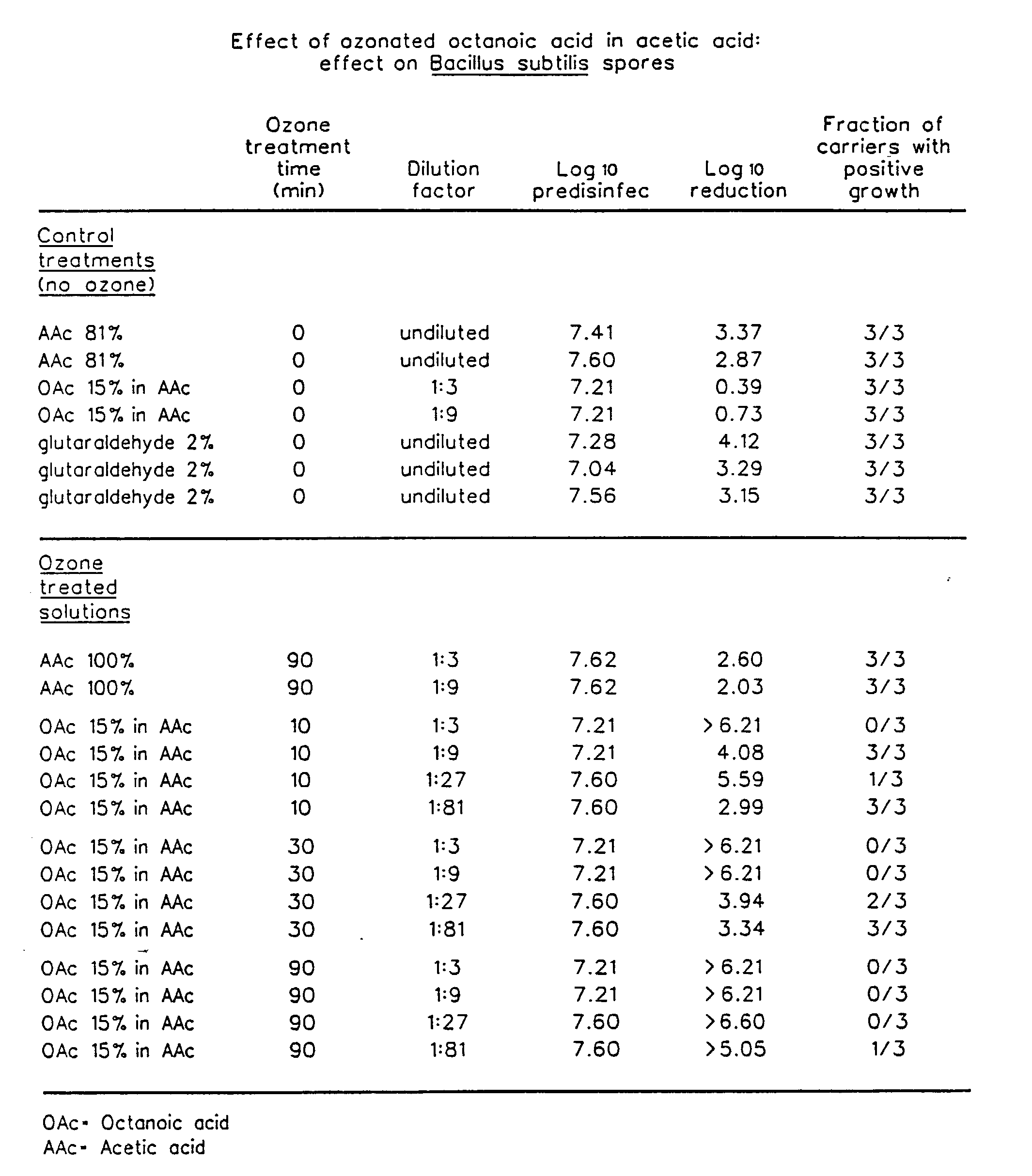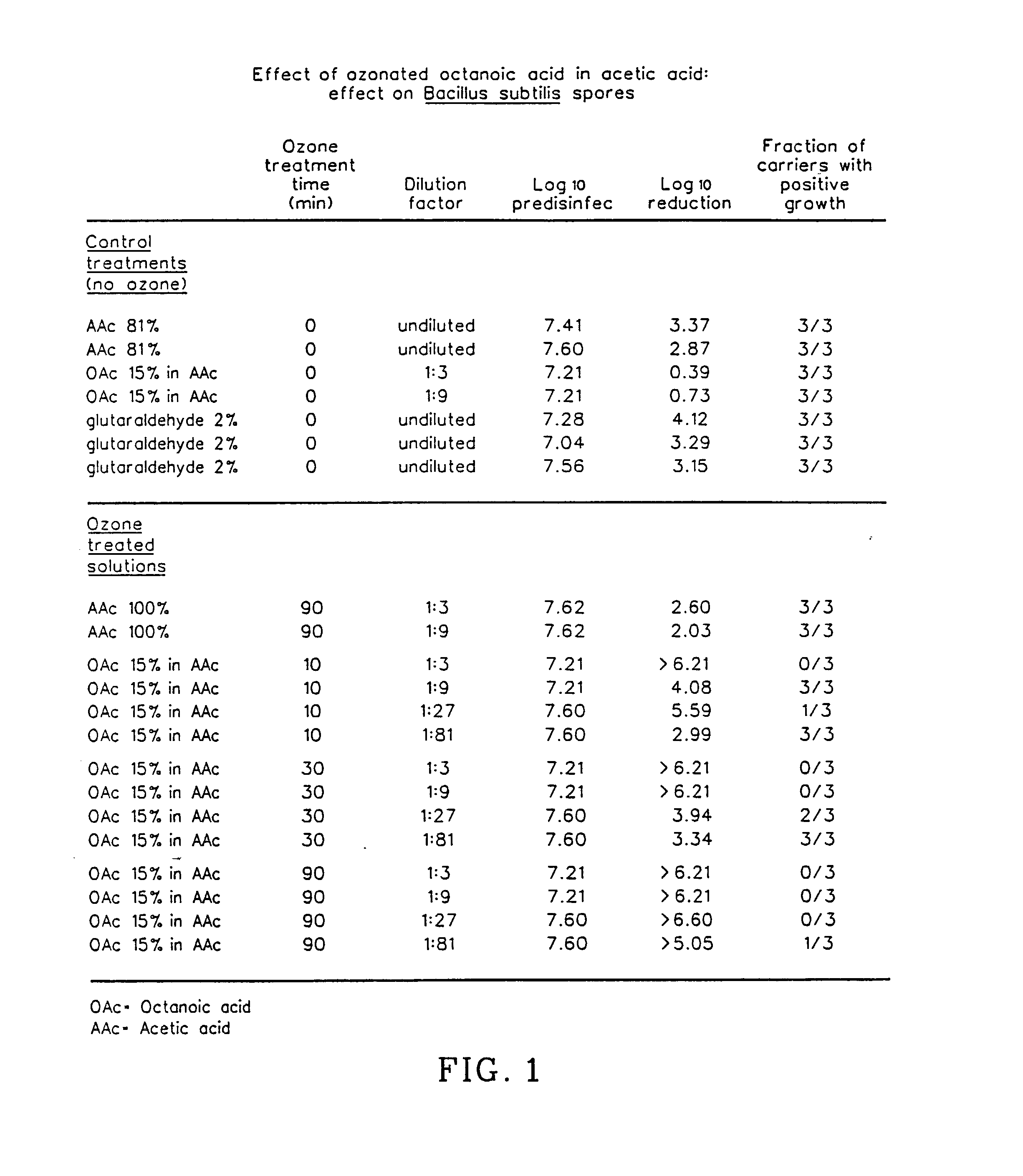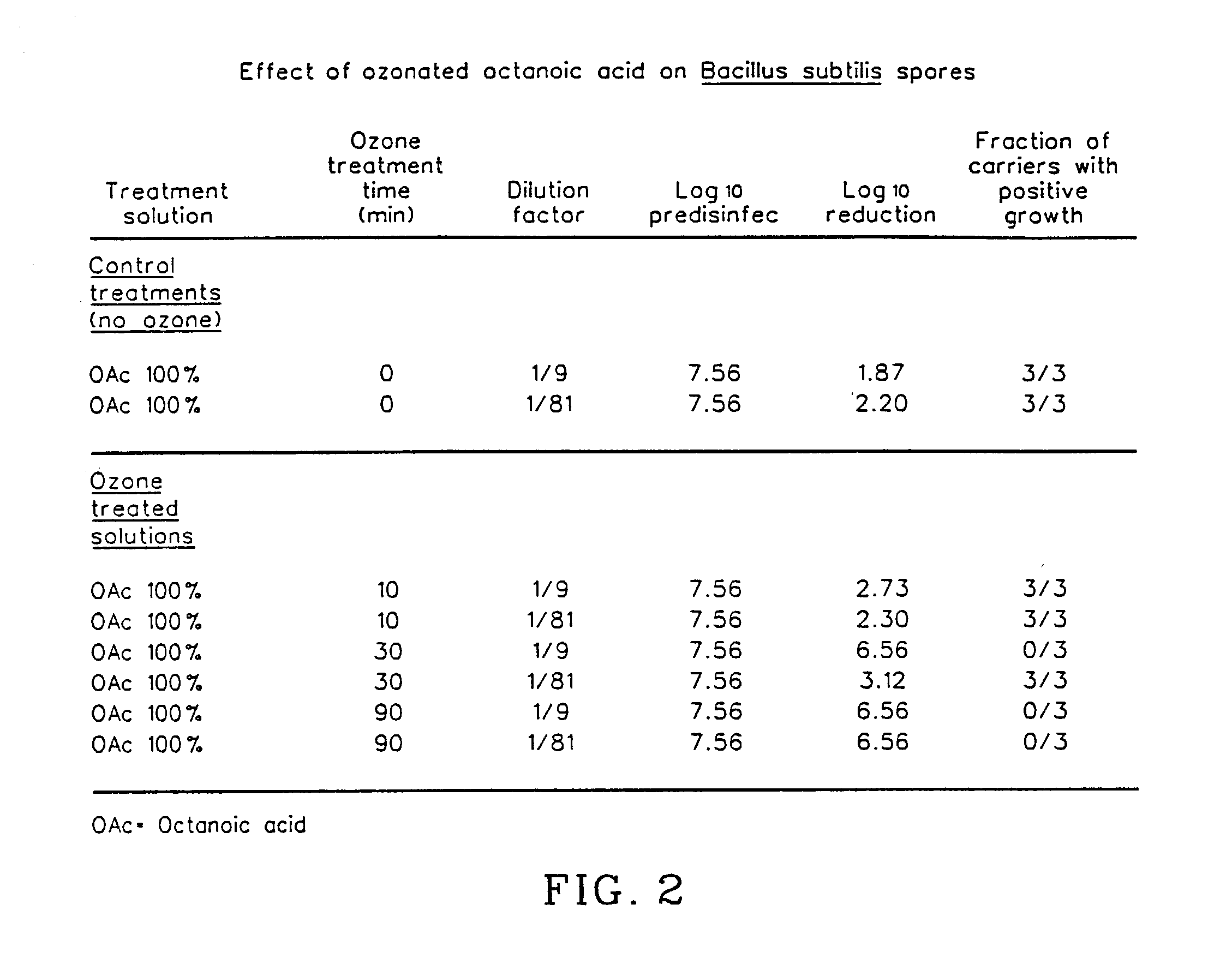Biocide formation via ozonation
a technology of ozonation and biocide, which is applied in the direction of biocide, detergent compounding agent, inorganic non-surface active detergent composition, etc., can solve the problems of ethylene oxide sterilization that requires long cycle times, high temperature and pressure, and many medical instruments cannot withstand high temperatures and pressures
- Summary
- Abstract
- Description
- Claims
- Application Information
AI Technical Summary
Problems solved by technology
Method used
Image
Examples
example 1
[0097] In this example, a disinfection solution was prepared by adding pure octanoic acid (OAc) into pure acetic acid (AAc), such that the final concentration of octanoic acid was 15% by volume. The liquid was ozonated as described above. Samples of the ozonated liquid were withdrawn after 10, 30 and 90 minutes. Each of the withdrawn samples were added to sterile distilled water to give dilutions of 1:3, 1:9, 1:27 and 1:81. The temperature of the ozonated liquid was between 40 and 50.degree. C. when the dilution was carried out. The sporicidal properties of the samples were evaluated as described above using a contact time of 30 minutes. For comparison purposes, a liquid containing 100% AAc (no OAc) was ozonated for 90 minutes, diluted in water and evaluated for sporicidal capabilities. In addition, the following non-ozonated liquids were evaluated: octanoic acid (16%) in acetic acid, acetic acid (9%) in water, acetic acid (81%) in water, and glutaraldehyde (2%).
[0098] Each data poi...
example 2
[0099] 100% OAc was ozonated for 10, 30 and 90 minutes. Cooling was applied during the ozonation process. The cooled solution was diluted then contacted with the glass spore carriers for 30 minutes. The results shown in FIG. 2 show that ozonated OAc gives rise to active biocides with an exceptional ability to eliminate spores. The result also shows that longer ozonation times increases the killing efficiency of the resulting liquids.
example 3
[0100] 15% valeric acid (VAc) in AAc was ozonated for 10, 30 and 90 minutes. Cooling was applied during the ozonation process. The cooled solution was diluted then contacted with the glass spore carriers for 30 minutes. The results shown in FIG. 3 show that ozonated VAc gives rise to active biocides with the ability to eliminate spores. Valeric acid was ozonated for the same time and under the same conditions as the OAc / AAc liquids in example 1. All things being equal, the liquid resulting from the ozonation of VAc was reduced in its ability to kill spores compared to a similar OAc / AAC mixture. However, longer ozonation times increase the killing efficiency of a mixture containing VAc.
PUM
| Property | Measurement | Unit |
|---|---|---|
| weight percent | aaaaa | aaaaa |
| time | aaaaa | aaaaa |
| temperatures | aaaaa | aaaaa |
Abstract
Description
Claims
Application Information
 Login to View More
Login to View More - R&D
- Intellectual Property
- Life Sciences
- Materials
- Tech Scout
- Unparalleled Data Quality
- Higher Quality Content
- 60% Fewer Hallucinations
Browse by: Latest US Patents, China's latest patents, Technical Efficacy Thesaurus, Application Domain, Technology Topic, Popular Technical Reports.
© 2025 PatSnap. All rights reserved.Legal|Privacy policy|Modern Slavery Act Transparency Statement|Sitemap|About US| Contact US: help@patsnap.com



